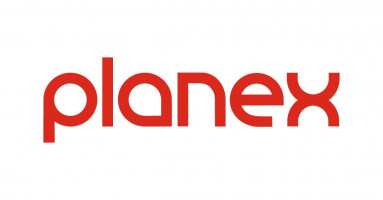-
Australia
Copyright © 2025 Powered by BCI Media Group Pty Ltd
Confirm Submission
Are you sure want to adding all Products to your Library?
Contact Detail

Why did you decide to be certified with your eco-labels?
Planex’s core values of doing no harm to our people, our stakeholders and our environment are attained by embedding sustainable process and waste management practices in all aspects of product design, manufacture and delivery.
Third-party certification is assurance that our products stand up to rigorous testing and auditing and provides architects and designers with a guarantee that they are providing the best solution to their clients. Planex has had Ecolabel certification since 2006 and we have noticed over time the growing confidence placed on certification by Government contracts at Local, State and Federal levels.
Unfortunately, being surrounded by a tsunami of greenwashing it has become ever more difficult to critically trust what is truth and what is the hype about products and services. Through external auditing to standards such as ISO 9001 and 14001 and having our products certified to GECA (level A) or AFRDI Level A/Platinum GreenTick ecolabels (equivalent to the GBCA 5-star rating) we provide our stakeholders with concrete evidence of best practice compliance. In 2021 we joined the UN Global Compact and completed the SDG Ambition Accelerator program that enabled us to identify and implement a plan of action to meet the UN Sustainable Development Goals.
What makes your product different from the general market?
Planex is one of the few manufacturers that make all of our products in Australia from Australian materials. We only source from Europe a few highly engineered parts not made in Australia. We design for longevity over landfill and all products can be disassembled for reuse, repurposing and recycling. Our products are between 95 to 99% Australian Bluescope sheet steel which has a minimum of 24.2% recycled content and is 100% recyclable. In many respects because of the materiality, it follows first nations principles of what comes from the earth can return to the earth with minimal harm.
We have also engaged First Nations designer Lucy Simpson to develop a range of custom perforations exclusive to Planex. These designs enable the telling of First Nations stories within the built environment, as part of a living culture. The range includes Yuurra-gi (speaks of movement), Buunhu (kangaroo grass) and Miimii (river’s edge/grandmother).
We have critically reviewed our waste to ensure that 98% of it is reused or recycled. One waste stream we are still currently endeavouring to fully resolve is how to deal with waste powder coat material. This is an assortment of microplastics that can and do enter the environment if not disposed of appropriately. Typically, industry sends this material to landfill which we believe is not the best practice as in the long-term, these tough microplastic particles, resist degradation and leach into groundwater. We have developed a way of incorporating this waste together with scrap steel to produce counterweights used in our production and avoid the landfill option.
We have received two Federal Government grants with industry partners and universities to research other ways of addressing this waste material.
We are also participating with GECA in the advisory panel for the Fit-For-Office Product Stewardship Scheme, which is hoped will provide pathways for Government to address how to divert end-of-life of commercial fit-outs products from becoming landfill.
How has being an ecolabel licensee helped your business with Government projects?
We have done well with Government projects at Federal and State levels and are currently an approved supplier to the NSW Government under the Office & Education Furniture Contract Deed of Standing Offer and the Federal Department of Health.
While our products are recognised and known for quality and good design, sustainability certification is not a must-have but is stated as preferred in Government procurement. Being an approved supplier for Government contracts does not guarantee the work, as builders often choose to substitute the nominated product for a cheaper one on the basis of perceived functional equivalence that may not take environmental aspects into consideration. Called “value engineering” this is justified by clauses in FFE schedules that state “and or similar” providing scope for substitution outside of the architect or the designer’s control. This use of “and or similar” in FF&E schedules requires a greater level of scrutiny than is currently occurring. By not taking into consideration all the labour, societal, freight and actual environmental aspects that make up an imported product we can have no real understanding of its environmental impact. Having been on Government sites and seen the substituted products we know that in 5 years’ time or less, they are destined to landfill.
We don’t think our environment can continue to ignore all these aspects and believe that any future ecolabels programs will need to consider this to remain meaningful. Regarding Government procurement, there is a need to move past sustainability as “a nice to have credential”.
We all agree that climate change is real and that we need to be doing all we can to minimise its impact. Therefore, putting sustainability at an equal or higher value than the cost of goods must become a priority.







